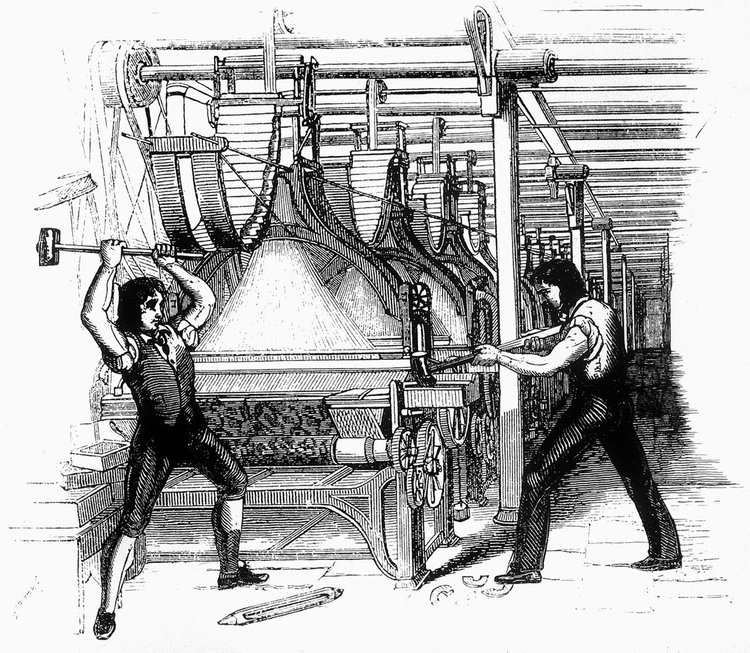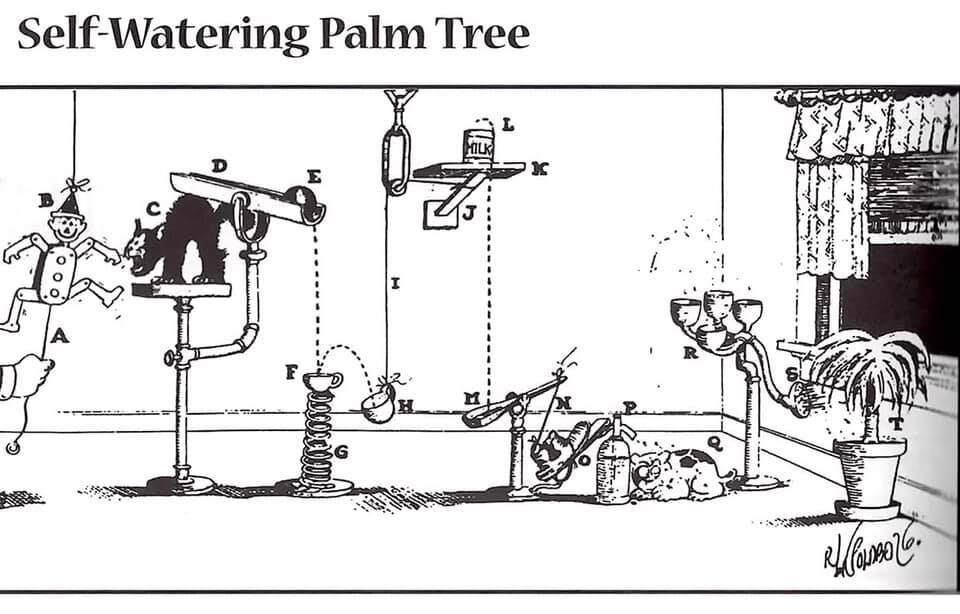- Home
- Resource Center
- Articles & Videos
- The Translation Industry’s Tech Paradox: Evolution or Obsolescence?
7 April 2025
The Translation Industry’s Tech Paradox: Evolution or Obsolescence?
Throughout history, every major industry has faced a reckoning—a moment when gradual improvements are no longer enough to stay competitive. The printing press didn’t emerge because scribes perfected handwriting. The steam engine wasn’t developed to make horses run faster. And yet, in the translation industry, many organizations continue to believe that optimizing outdated processes will keep them ahead.
The industry’s so-called “tech adoption” often consists of adding translation management systems (TMS), automating minor workflow steps, or integrating machine translation (MT). But these aren’t transformative changes; they are superficial enhancements to a model that is already showing cracks.
The real shift—the one that will separate thriving translation organizations from those on the brink—doesn’t come from incremental automation. It comes from a fundamental rethinking of how translation is delivered, managed, and valued in a software-first world.
The question is: will translation organizations embrace this shift willingly, or will they, like many industries before them, wait until they are forced to change?
Tech-Enablement or Stagnation? The Warning Signs of an Industry in Flux
History teaches us that industries don’t collapse overnight. Instead, they experience a slow erosion—a steady accumulation of inefficiencies, missed opportunities, and shifting client expectations that go unaddressed until they become insurmountable.
Consider the textile industry during the Industrial Revolution. For centuries, fabrics were woven by hand, with small improvements in technique making the process marginally faster. The introduction of mechanized looms didn’t immediately eliminate manual weaving, but it changed the landscape. Large-scale manufacturers who adopted automation dominated, while smaller hand-weaving businesses dwindled, unable to keep up with demand or pricing pressures.

Source: Wikipedia
The same pattern is playing out in translation. AI-driven solutions are handling larger portions of the translation workload. Enterprise buyers demand speed, scalability, and integration as standard. Even smaller clients now expect real-time access to translation data and insights.
Yet, many translation agencies and in-house localization teams continue operating as though gradual refinements will be enough. They tweak their workflows, optimize project management, and adopt automation piecemeal—while still relying on manual coordination at their core.
But true tech-enablement is more than just integrating AI into fragmented workflows—it’s about restructuring operations around technology to maximize its impact. Organizations that treat automation as a bolt-on solution will struggle, while those that embed it into their foundation will gain agility, efficiency, and a competitive edge.
Optimizing a flawed system doesn’t future-proof a business. It only delays the inevitable.
Process-First Thinking: A Modern-Day Rube Goldberg Machine

The translation industry has perfected process-driven workflows, layering project management onto legacy systems in an attempt to improve efficiency. But like a Rube Goldberg machine—a complex system designed to complete a simple task in the most convoluted way possible—this approach adds unnecessary complexity instead of solving the root problem.
Take, for example, early banking systems. Before the digital era, financial transactions relied on extensive paperwork, approvals, and manual record-keeping. When computers first entered the scene, banks didn’t immediately redesign their processes—they simply digitized the same bureaucratic steps, keeping the inefficiencies intact. It wasn’t until fintech disruptors introduced fully digital financial ecosystems that traditional banks were forced to rethink their models.
Similarly, most translation organizations use technology to improve existing workflows rather than to reinvent them.
Project managers still spend hours assigning tasks, tracking progress, and approving revisions. Translations still move through manual review cycles with limited automation. Scalability is constrained by human oversight—more projects require more people, more layers of management, and higher costs.
The Fear of Reinvention
Despite the clear advantages of a software-first approach, many translation organizations resist making the leap. Why?
Because transformation feels like loss. Letting go of familiar processes, even inefficient ones, creates uncertainty. It may mean losing long-standing clients who resist change. It may disrupt workflows that have functioned (albeit imperfectly) for years. It may mean facing internal resistance from teams who are comfortable with the status quo.
Retail serves as a perfect parallel. When e-commerce first emerged, brick-and-mortar stores believed their customers would always prefer in-person shopping. They dismissed online sales as a niche trend rather than a fundamental shift in consumer behavior. By the time they recognized the demand for convenience, flexible payment options, and real-time inventory management, online retailers like Amazon had already redefined the market.
Translation organizations are at a similar crossroads. Sticking to process-first models feels safer in the short term, but it leads to obsolescence in the long run. The firms that embrace a software-first approach now will dictate the future of the industry. Those that don’t will find themselves reacting to changes rather than driving them.
Unlocking the Benefits of a Software-First Approach
Making the transition to a software-first model isn’t just about efficiency—it’s about unlocking entirely new possibilities for growth, profitability, and client relationships.
- Scalability Without Increased Overhead: Traditional models require more project managers and manual oversight to handle growth. A software-first approach enables exponential scaling without proportional cost increases.
- Seamless Integration with Client Systems: Instead of providing standalone translations, software-first organizations become integral parts of their clients’ workflows, delivering real-time insights and automated content updates.
- Stronger Margins Despite Pricing Pressure: As AI reduces the base cost of translation, companies still relying on human-managed workflows will see margins shrink. Those leveraging automation will maintain profitability even as prices shift.
- More Engaging Work for Human Translators: Instead of repetitive, low-value tasks, human linguists focus on strategic translation, cultural adaptation, and quality oversight—elevating the profession rather than diminishing it.
The Tipping Point
Every industry faces a moment where maintaining the status quo is no longer an option. The translation industry is reaching that point now. Some organizations will continue refining outdated workflows, believing that small optimizations will sustain them. Others will recognize that true innovation requires a different mindset—one that embraces software not as a tool for efficiency, but as the foundation of a new business model.
The choice is clear: continue breeding faster horses or build the automobile.
The companies that take the leap today won’t just survive the next decade—they will define it.
The New Role of Translators: From Executors to Architects
A common fear in AI-driven industries is the displacement of human workers. But history suggests a different narrative—one where automation elevates human roles rather than eliminating them.
Look at architecture. Before digital design tools, architects relied on hand-drawn blueprints, a labor-intensive process prone to errors. When CAD (Computer-Aided Design) software emerged, many feared that automation would make architects obsolete. Instead, it allowed them to focus on creativity, strategy, and innovation, rather than tedious manual drafting.
Translators today face a similar evolution. Instead of being reduced to post-editors of machine-generated text, they have the opportunity to become Language Flow Architects—guiding AI-driven translation engines, fine-tuning language nuances, and ensuring contextual accuracy at scale. This shift transforms translation from a mechanical task to a strategic discipline, where human expertise is amplified by technology.
Organizations that recognize and embrace this shift will attract top linguistic talent, while those stuck in process-first thinking will struggle to remain relevant in a world where automation handles the repetitive tasks faster and more accurately than humans ever could.
Rewriting the Business Model
A software-first approach doesn’t just optimize workflows; it fundamentally alters how translation services are sold, delivered, and valued. This shift requires companies to rethink their revenue models, moving from purely transactional services to strategic partnerships with clients.
Think of the shift in music distribution. Decades ago, record labels profited from album sales, a straightforward exchange of money for a physical product. As digital streaming platforms like Spotify emerged, labels had to rethink their approach. The music itself remained central, but the business model transformed from ownership-based to subscription-driven. Those who adapted early found new revenue streams; those who resisted lost relevance.
For translation firms, the old model of charging per word or per project will gradually fade. Instead, we will see:
- Subscription-Based Services: Clients pay for continuous access to translation capabilities, rather than per-project fees.
- Value-Added Solutions: Beyond raw translation, firms provide AI-enhanced linguistic insights, quality assessment tools, and content localization strategies.
- Outcome-Based Pricing: Rather than focusing on words translated, pricing may shift toward metrics like audience engagement, content performance, and translation accuracy.
The Future of Translation: A Software-First Ecosystem
Industries that successfully transition through disruption do so by embracing their new reality rather than resisting it. In the translation industry, this means shifting from process-driven thinking to a software-first ecosystem that seamlessly integrates automation, AI, and human expertise.
Consider the evolution of finance. Traditional banking relied heavily on manual processes, with tellers, paper-based transactions, and face-to-face interactions. When online banking first emerged, many dismissed it as an inferior alternative to in-person service. Today, digital banking isn’t just an option—it’s the default. Financial institutions that adapted early not only survived but set the standard for convenience, security, and efficiency.
Translation follows a similar trajectory. Organizations that rely on manual workflows and legacy systems will find themselves at a disadvantage as clients demand greater speed, transparency, and real-time insights. Software-first translation solutions offer:
- Scalability Without Increasing Overhead: Automating core functions allows firms to grow without proportionally increasing operational costs.
- Real-Time Quality Tracking: AI-driven systems detect inconsistencies and potential errors before they reach the final translation stage.
- Seamless Client Integration: Companies expect translation to be embedded in their workflows, not handled as a separate, time-consuming process.
- Data-Driven Decision Making: Advanced analytics provide insights into performance, quality, and efficiency—enabling continuous optimization.
The Industries That Lead—And Those That Lag
Industries that embrace digital transformation early tend to lead their sectors for decades. Those that resist eventually struggle to survive. The automotive industry offers a compelling example. While legacy car manufacturers debated the viability of electric vehicles, Tesla bet on a software-first approach—treating cars as evolving platforms rather than static machines. Today, even the most traditional automakers are scrambling to catch up.
Translation organizations have a similar choice: cling to the familiar or redefine the industry.
The firms that embrace software-first methodologies will not just survive—they will shape the next generation of translation. Those that hesitate will find themselves competing in a race where the starting line has already moved forward.

Gabriel Fairman
Gabriel Fairman is a thought leader and entrepreneur specializing in localization and business process automation. He has navigated Bureau Works from a Boutique Translation Agency to a Global Localization Platform/Translation Management System. A speaker of six languages, Gabriel grew up speaking American English, Brazilian Portuguese, and Argentinian Spanish. He then picked up a bit of French, Italian, and Mandarin. Gabriel writes about the first-hand experience of a business leader, entrepreneur, father, and human being. He loves to play the guitar, cook, play tennis, and be in nature in any way or shape.


